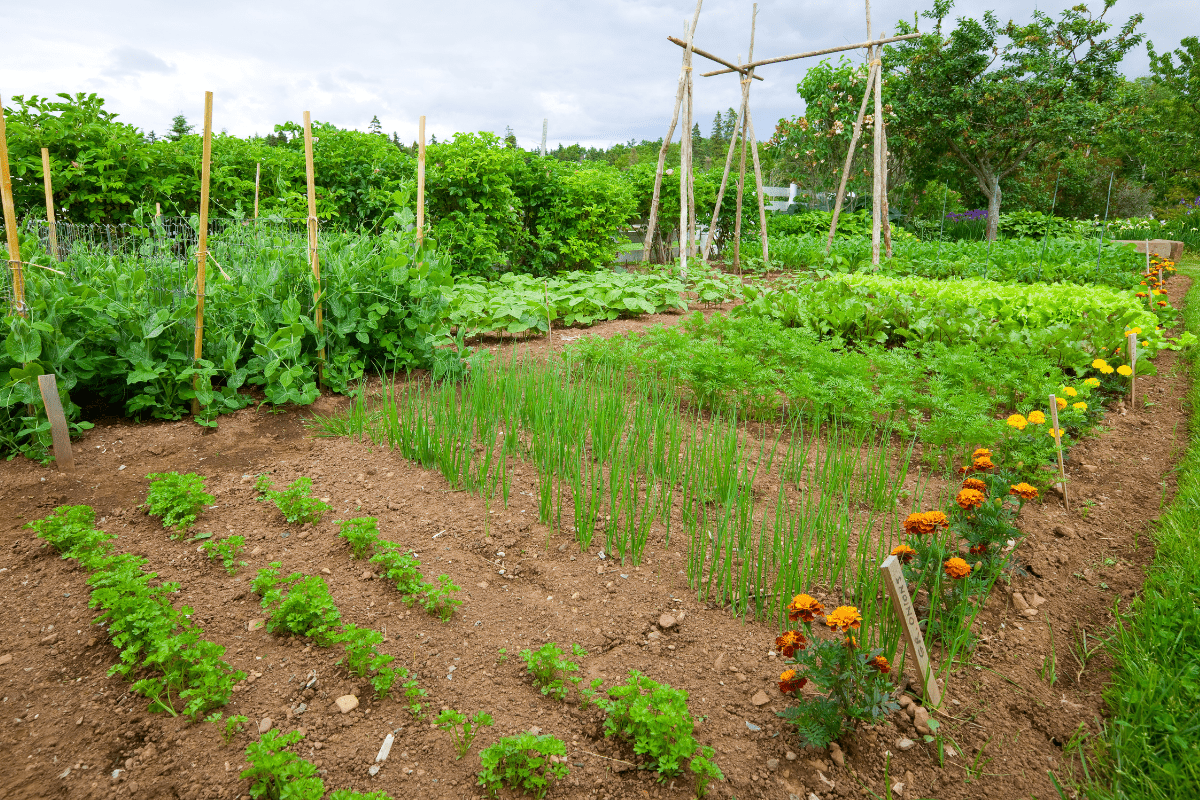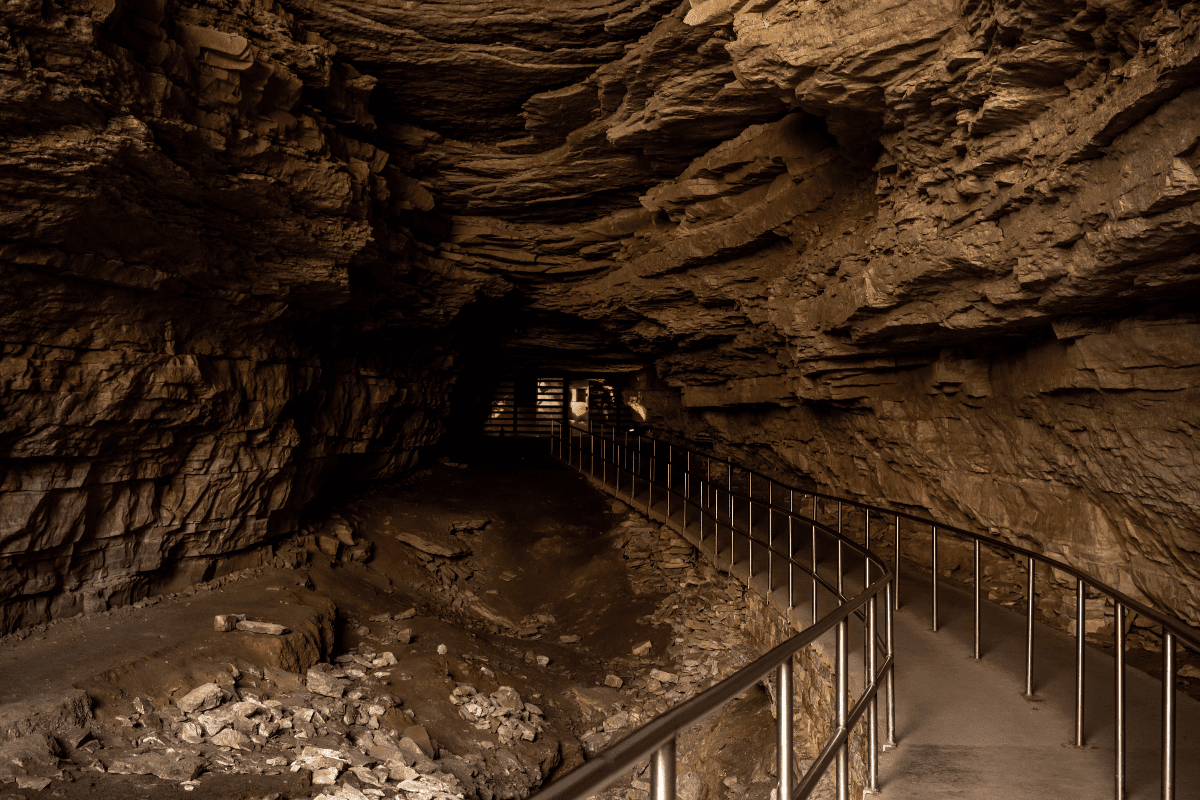Listen, if you've ever tried to dig a hole in Kentucky clay after a rainstorm, you know our soil has the consistency of modeling compound. But here's the thing… this challenging ground produces some of the most abundant gardens in the country when you work with it instead of against it.
Understanding Kentucky's quirky growing zones
The USDA threw us a curveball in 2023 when they updated our growing zones from 6a-7a to the warmer 6b-7b. Apparently, even our winters are getting lazy. This shift means we can grow things our grandparents only dreamed about, but it also means those random April freezes hit even harder when they show up fashionably late.
Your local microclimate matters more than the map
Kentucky's growing season swings wildly from 144 days in the mountains to 230 days around Louisville. That's like comparing a sprint to a marathon. Most of us get about 180 frost-free days from mid-April through mid-October, which sounds generous until you remember that one year it snowed on Derby Day.
Our state sits in what weather folks call a "transition zone," which basically means Mother Nature can't make up her mind. We get:
- 40-58 inches of rain annually (usually all at once)
- Summer humidity that makes 70% feel dry
- Clay soil that doubles as pottery material
- Limestone bedrock that keeps things alkaline
Spring planting: Racing against the last frost
Spring in Kentucky is like a moody teenager… unpredictable and prone to dramatic temperature swings. But once you understand the rhythm, you can work with it.
Cool-season crops love our wishy-washy weather
Start your cool-season vegetables when the soil is still chilly but workable. In western Kentucky, that's around March 15, while central Kentucky gardeners wait until March 25. The UK Extension recommends direct seeding these hardy characters:
- Peas (Mr. Big matures in 58 days)
- Spinach (Space variety, 29 days)
- Radishes (Cherry Belle, 30 days)
- Carrots and beets
- Kale and lettuce
For transplants, cabbage and kohlrabi go in the ground around the same March dates. Wait until April 1-15 for broccoli, unless you enjoy watching it bolt faster than a spooked thoroughbred.
Getting a head start on summer
While you're planting peas outside, start your heat-lovers indoors. The Warren County Agriculture folks suggest:
- Tomatoes: February 25 to March 10
- Peppers and eggplant: March 1-15
This gives them 6-8 weeks to develop before transplanting after our average last frost (May 10-15, but don't trust it completely).
Summer survival guide for gardens
Kentucky summers are like that friend who doesn't understand personal space… hot, humid, and all up in your business. The key is choosing plants that actually enjoy these conditions.
Once soil temperatures hit 60°F in mid-May, it's time for the main event. But here's where variety selection becomes crucial. Skip the generic hybrids and go for disease-resistant champions like:
- Celebrity tomatoes (VFN resistance)
- Mountain Fresh (handles multiple diseases)
- Cherokee Purple (if you're feeling brave)
For peppers, bacterial leaf spot is your nemesis. Fight back with resistant varieties like Jedi F1 jalapeños or Revolution bell peppers.
Heat lovers that laugh at humidity
When traditional greens give up around July, these alternatives keep producing:
- Okra (waits until soil hits 65°F)
- Malabar spinach (not really spinach, but who's checking?)
- Armenian cucumbers
- Yard-long beans (fun to grow, funnier to cook)
Pro tip: Use black plastic mulch to warm the soil and suppress weeds. Your back will thank you later.
Succession planting for continuous harvest
Plant these on repeat for non-stop production:
- Beans every 10-14 days
- Sweet corn every 2 weeks
- Summer squash monthly (unless you want to become that neighbor who leaves zucchini on doorsteps)
Fall gardening: The second spring
Fall gardening in Kentucky is like getting a do-over for spring, except with fewer bugs and better-tasting greens. Count backward from your first frost date (late October in the mountains, mid-November out west) to time your plantings.
August means thinking ahead
Early August is transplant time for the brassica family. Get these in the ground:
- Broccoli
- Brussels sprouts
- Cabbage
- Cauliflower
- Collards
Direct seed through early September:
- Carrots and beets (sweeter after frost)
- Turnips (your grandmother was right about these)
- Lettuce, spinach, arugula
- Asian greens like bok choy
Cover crops: Your soil's winter blanket
After pulling summer crops, don't leave soil bare. UK Extension strongly recommends cereal rye for multiple benefits:
- Adds organic matter
- Suppresses weeds
- Prevents erosion
- Improves soil structure
Mix in some crimson clover for nitrogen, or try tillage radishes if your clay soil needs serious intervention. Broadcast seed before October 15 and work it in lightly.
Winter growing and season extension
Here's where Kentucky gardening gets interesting. Our updated zones mean we can grow food through winter with just a little protection.
Hardy crops that scoff at frost
These vegetables actually taste better after a freeze:
- Kale (becomes sweeter)
- Spinach (incredibly cold hardy)
- Mache (fancy name, unfancy plant)
- Brussels sprouts (harvest January through March)
Plant these by early September so they're established before growth slows in November.
Row covers: Your garden's winter coat
Row cover weights and their protection levels:
- Light (0.5 oz): 2-4°F protection
- Medium (1.5-2.2 oz): 4-6°F protection, lets through 70% light
- Heavy (3+ oz): 6-10°F protection
Support covers with hoops to prevent snow damage, and remember to ventilate on sunny days above 45°F. I learned this the hard way when I cooked a row of lettuce on a sunny February day.
Cold frames for serious season extension
Building a cold frame is easier than assembling IKEA furniture. You need:
- A bottomless box
- Back wall 6 inches higher than front
- Clear lid (old window works great)
- South-facing location
- Automatic vent opener (trust me on this)
Cold frames can extend your season by 6-8 weeks and reach 80°F inside when it's freezing outside.
Conquering Kentucky clay soil
Let's talk about the elephant in the garden… our clay soil. It's simultaneously water-retentive and poorly draining, nutrient-rich but stingy about sharing, and harder than algebra when dry.
The amendment strategy that actually works
Add 2-3 inches of compost annually. That's it. That's the secret. This simple act:
- Improves drainage
- Increases beneficial microorganisms
- Buffers pH fluctuations
- Makes digging possible without power tools
Never, and I mean never, work clay soil when it's wet. If it sticks to your shoes, it's too wet. If it forms a ball when squeezed, it's too wet. If you're questioning whether it's too wet, it's probably too wet.
Soil testing: Knowledge is power
UK Extension offers soil testing for $7-8 at any county office. Test every 3-4 years to track:
- pH levels (usually 6.5-7.5 here)
- Available nutrients (not just what's present)
- Specific recommendations for YOUR soil
Common Kentucky soil quirks include high total potassium with low availability and phosphorus that gets locked up tighter than Fort Knox.
Alternative growing solutions
If your clay wins the battle, try these workarounds:
Raised beds: Build them 6-8 inches high with a mix of compost, topsoil, and existing soil. They drain better and warm up faster in spring.
Container gardening: Use actual potting mix (not garden soil) in containers at least 24 inches wide for tomatoes. Check out UK Extension's self-wicking container designs for lower maintenance watering.
Managing pests and diseases in humidity heaven
Kentucky's humidity makes our state a paradise for fungal diseases and certain pests. But don't reach for the spray bottle just yet.
Integrated pest management that works
The EPA's IPM approach beats the spray-and-pray method:
- Monitor weekly (know your enemy)
- Identify accurately before treating
- Use action thresholds, not calendar spraying
- Try cultural controls first
- Preserve beneficial insects
Common solutions that actually work:
- Row covers for cucumber beetles
- Hand-picking tomato hornworms (chickens love them)
- Encouraging ladybugs for aphids
- Beneficial nematodes for grubs
Disease prevention in the humidity dome
With our 70-80% summer humidity, prevention beats treatment every time:
- Space plants for airflow (closer isn't better)
- Mulch to prevent soil splash
- Water early morning so leaves dry
- Remove diseased material immediately
- Choose resistant varieties (seriously, this matters)
Drip irrigation or soaker hoses beat overhead watering every time. Your tomatoes will thank you by not developing every fungal disease in the book.
Final thoughts on year-round Kentucky gardening
Gardening in Kentucky is like dancing with a unpredictable partner… sometimes you step on each other's toes, but when you find the rhythm, it's beautiful. Work with our clay soil instead of fighting it, choose varieties bred for our humidity, and use season extension techniques to harvest something fresh nearly every month.
Remember, even experienced gardeners kill plants (I murdered an entire row of beans last summer by planting them in soil that was apparently cement-cold). The trick is learning from each season and enjoying the journey, clay soil and all. Whether you're growing heirloom tomatoes in Louisville's long season or hardy greens in the mountains, Kentucky rewards gardeners who understand her quirks.
Now if you'll excuse me, I need to check if that clay soil has dried enough to actually dig in. Wish me luck.





